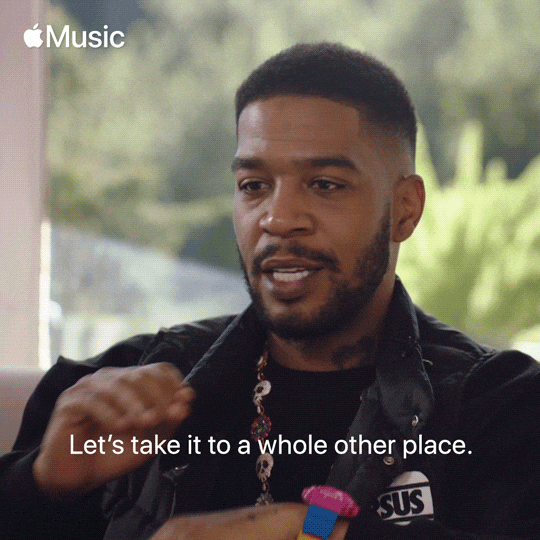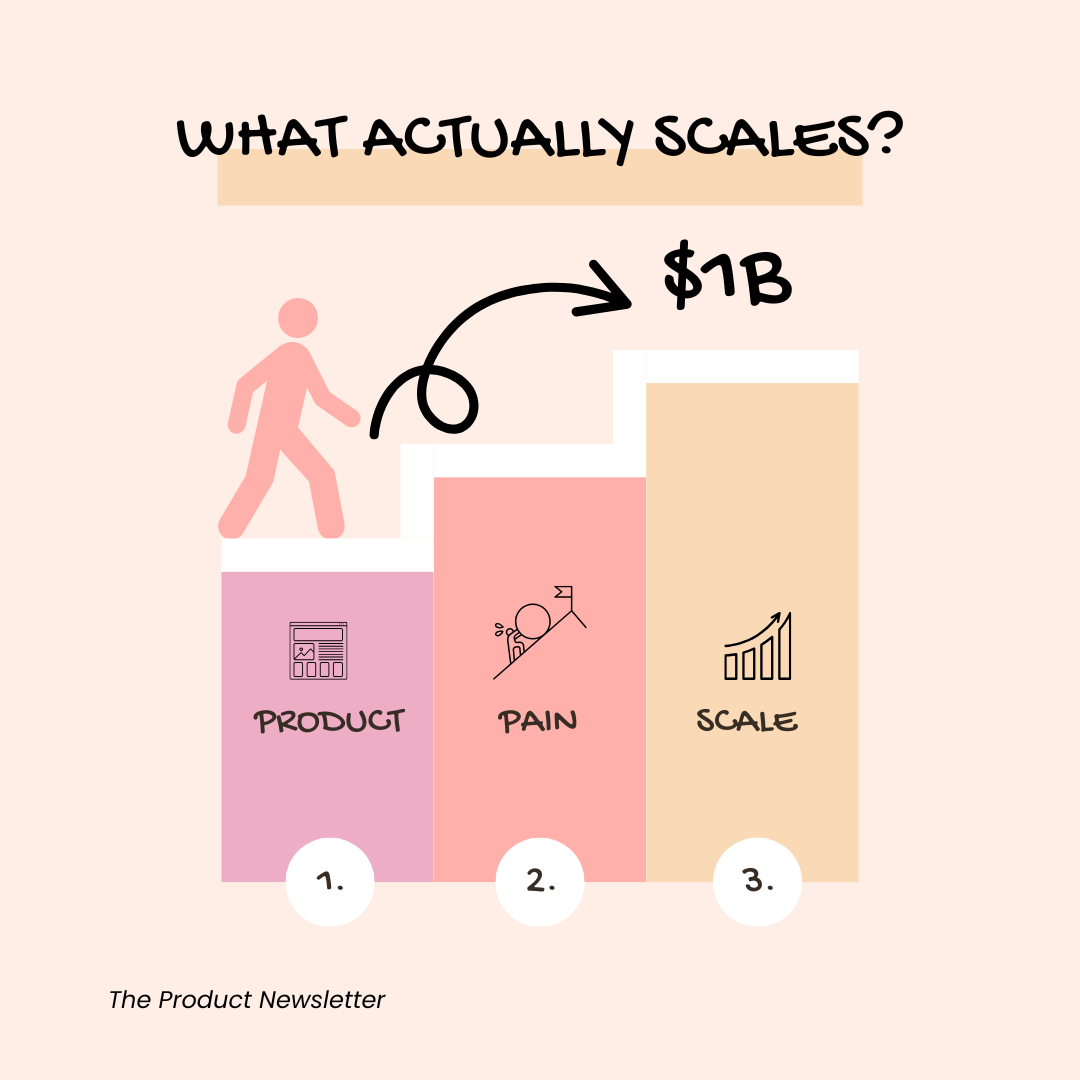From Zero To A Billion Dollars: Startup Lessons About Product, Pain, and What Really Scales
This piece contains hard-won lessons from building a billion-dollar startup—what mattered, what didn’t, and what actually scales
Hi 👋! You are reading one of my free articles - I hope it helps you level up your PM skills. Want to go deeper? My premium subscribers get exclusive frameworks and strategies I don’t share anywhere else - content that has helped hundreds of product managers land better roles and make bigger impact.
Ready to accelerate your product career? Subscribe now for premium access and join a community of exceptional PMs gaining an edge every week.
Now, let’s dive into today’s insights…
I joined a startup when it was just a concept and a whiteboard.
No product. No revenue. A small, rented house in Dallas, Texas served as our headquarters. My sleeping arrangement was a closet with an outlet and a space heater wedged between prototypes.
Today, the same startup has helped small businesses earn over $1 billion, grown into a team of nearly 100 people, and raised hundreds of millions in capital. I led the product through the earliest chaos and stayed to see it scale.
This isn’t a victory lap. It’s a distillation of the lessons that mattered most. In this article, you will find 8 core lessons I learned from this wild adventure.
1. Confidence and Humility Are Not Opposites. You Need Both.
If you will build anything that lasts, you must believe deeply that you are uniquely equipped to solve a specific problem. That belief is what lets you attract talent, survive rejection, and lead from the front.
However, just as important is the humility to accept that your initial ideas will likely be flawed, your first roadmap will have gaps, and your growth will often lag behind what the company needs next.
The startups that endure are led by people who operate with extreme confidence and extreme humility. They act boldly while listening relentlessly. They believe in their ability to figure it out—even when they know they haven’t.
2. You’re Not Building One Company. You’re Building Five.
Every time our headcount doubled, the business broke in new and interesting ways.
The company I joined wasn’t the company we became. The early-stage scramble for product-market fit gave way to building a repeatable GTM engine. Then came people problems, operational debt, and eventually, reinvention.
We weren’t scaling a startup. We were serially founding new ones inside the same shell.
Each version required different systems, skills, and standards. And each one demanded that I upgrade myself just to stay relevant.
3. Your Emotional Stability May Be the Most Underrated Success Factor
In the early days, I assumed product decisions, hiring bets, and go-to-market plays were the biggest levers. But over time, I learned that my stability mattered just as much.
I found that my energy, my clarity, and my conviction had a visible ripple effect across the team. If I walked into a Monday sync radiating panic, the whole org absorbed it. If I brought grounded optimism even after a rough week, people recalibrated and focused.
Startups are emotional amplifiers. The earlier the stage, the more your internal state bleeds into the culture.
Eventually, I stopped treating emotional resilience as a nice-to-have and started treating it like a core leadership skill. I built guardrails: regular sleep, running, journaling. Not for productivity. For stability.
Takeaway: What you build externally will only be as strong as what you reinforce internally.
4. Product Innovation Doesn’t Win Without Business Model Innovation
We had great UX. Clean flows. A roadmap full of user love. And we still lost deals until we cracked monetization. The turning point in our growth wasn’t a product launch. It was a shift in pricing structure that changed our LTV math and suddenly made our CAC scalable.
This is the part that gets ignored in most startup advice: whoever can pay the most to acquire a customer wins. Not whoever has the slickest UI.
The only way to outspend competitors sustainably is to out-monetize them.
Takeaway: Great product design makes users happy. Great business models make scale inevitable.
5. Culture Is the Story That Helps You Survive the Hard Parts
Most people define culture by perks or vibes. But the best way to think about culture is as a shared narrative about who we are and how we operate when things get hard.
We reverse-engineered ours. We asked: “What kind of company will win in this market?” Then we designed values that would reinforce those traits.
Speed. Accountability. Candor. Grit.
We didn’t put them on a wall. We put them into performance reviews, onboarding, and decision-making criteria. We hired and fired based on them. That consistency turned our values into a compass.
Takeaway: Culture is not what you say. It’s what your team knows to expect when the pressure is on.
6. You’ll Need a Deeply Personal Reason to Keep Going
Logic will get you started. But emotion is what keeps you in the game when everything breaks at once.
I stayed in the fight not because it was rational, but because it mattered to me. I had something to prove not to the market, but to myself.
Over time, I met more founders who carried invisible reasons. A missed opportunity. A childhood frustration. A voice they wanted to quiet.
It turns out, irrational drivers are often the most durable.
Takeaway: Resilience isn’t just about grit. It’s about finding the thread that makes quitting feel more painful than staying.
7. Boredom Is a Bigger Threat Than Burnout
There’s a version of the startup story that’s all highs and hard problems. But the truth is that scaling involves long stretches of tedium.
We ran 50+ similar hiring loops in a quarter. We answered the same user objections across hundreds of sales calls. We refined the copy, ran regression tests, and updated dashboards repeatedly.
It wasn’t glamorous. It was necessary.
Execution isn’t always interesting. But consistency is what compounds.
Takeaway: The biggest wins often come from doing the dull work longer and better than everyone else.
8. Leverage Starts with Letting Go
There is no badge for doing everything yourself. If you are still managing every task, you’re not leading, you’re hoarding.
The most transformative decision I made was hiring a remote executive assistant. It gave me back dozens of hours a month to think, plan, and build. It changed how I operated and elevated where I spent my attention.
Real scale began when I stopped clinging to control and started designing for leverage.
Takeaway: Your time is not your most valuable asset. Your focus is.
The Meta-Lesson: Products Are Built by People, Not Processes
After six years of building this product from nothing to something significant, the biggest lesson is the most obvious one: Great products are built by great people who care deeply about the problem they are solving.
All the frameworks, methodologies, and best practices matter. But they are just tools. The real competitive advantage is finding people who will obsess over user problems, who will persist through inevitable setbacks, and who will maintain quality standards even when speed pressures are intense.
If you are building something that matters, your product strategy is really a people strategy. Everything else is tactics.
What’s Next
The product I helped build is still growing, still evolving, and still surprising me with what's possible. But my focus shifted towards the next challenge: How do we build products that don't just scale efficiently, but that actually make people's lives better?
That’s story for another post.
ICYMI: Strategy is a core skill every PM needs to master. These past issues break down how to build strategic thinking into your decision-making—so your product moves in the right direction and team dynamics stay healthy.
Excellent product thinking is one of the keys to building products with taste. But how do you sharpen that muscle—and use it to consistently build products people love and value? That’s what this piece is all about 👇🏾
Product decisions require a multi-layered approach. Since product management sits at the intersection of several cross-functional disciplines, you need to think in multiple directions to cover your bases. So how do you master thinking in layers? This article answers that question.








